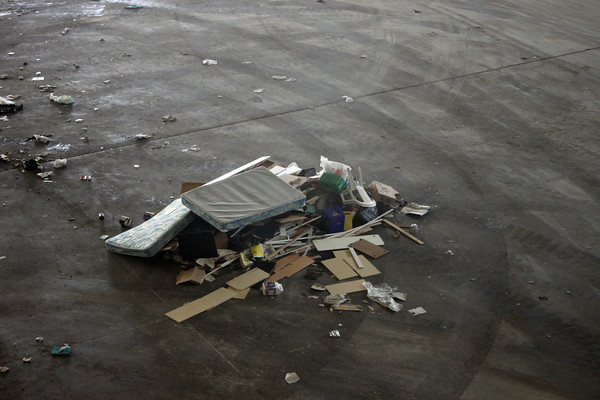Christmas is just around the corner! How did THAT happen? Seems like just yesterday the 2012 MCR class graduated!
That is REE-DONC-U-LOUS!
Instead of buying more stuff, spending tons of money, and wasting our precious resources try some of these ideas:
keep it local
Save
resources and support your friends & neighbours by shopping at local stores;
good for the environment & the community.
live-local.ca
live-local.ca
christmas cards
I don't send or use Christmas cards often, but when I do, I source them from Value Village. There are always bags of unused cards (with their envelopes), hanging on the wall. Never the same selection twice, so it’s kind of fun to see what you can get! Who doesn’t "love the thrill" of the thrift store search? You can also get used cards from the Reuse Centre!valuevillage.com
gift-wrap
I rarely use paper to wrap gifts,
but if I do need some I source it from the Reuse Centre. It is simply amazing to me what people give
away, & remember all you can carry for $5.
edmonton.ca/reuse
edmonton.ca/reuse
reused wrappers
Think outside
the box for this one! I haven’t thrown a
bag or container away since MCR graduation.
- chip/cracker bags turned inside out make fantastic gift bags – shiny & festive
- any bag that contained foodstuff can be used again to give away homemade goodies….it is sort of fun to give away baking in a large rice bag for example!
- jars of all shapes & sizes make great containers for my home-made goodies
- cool mailing containers from liquor sleeves
- coffee cans scavenged from work make a great container once they are painted or papered
re-gifting & thrifting
I have NO PROBLEM re-gifting & thrifting presents for my family &
friends. I do realize this is a personal
decision and I will state for the record that I would never re-gift/thrift with
anyone and pretend it was new stuff; cuz that just sounds like a SEINFELD
episode plot line! Nothing tickles my
fancy more than knowing my re-gift or thrift gift will make someone else happy J ...and of course its saves me tons of $$$$!
volunteer
Who needs more
stuff anyway? Some of my best Christmas
memories have been made while volunteering with family & friends to make
someone else’s Christmas special. Collecting donations, serving a meal, and helping
at food bank concerts are fun & festive volunteer opportunities.
christmasbureau.ca
theseed.ca/christmas-edmonton
salvationarmy.ca/alberta
christmasbureau.ca
theseed.ca/christmas-edmonton
salvationarmy.ca/alberta
christmas light tour
The City of Edmonton has a FANTASTIC program where staff volunteers drive a bus
around town to view Christmas light displays at candy cane lane, legislative
grounds and the museum. Tickets are only
a $3, fun & hi-jinx are free! Depending on the transit volunteers and your
fellow passengers you could be involved in a Christmas carol sing-a-long, a
stand-up comedy show, or a family style get-together complete with crazy aunts
and snoring uncles. Santa has even been
known to make an appearance! Never the
same tour twice, and great for all ages and mobilities. Bring your favourite beverage in a to-go cup,
grab the gang and book a seat.
edmonton.ca/transportation/ets/seasonal_events_attractions/ets-christmas-light-tours
edmonton.ca/transportation/ets/seasonal_events_attractions/ets-christmas-light-tours
gifts
I have made a pledge
this year to give nothing but consumables. I know how to cook, so I am making foodie foodster gifts. I do wish I could knit, sew, craft, build,
write, or carve something, but I will have to leave that you!
share a tree
If you live in a multi-family dwelling do you all need your OWN tree? Of course you don’t! Share with your neighbours and friends. One tree per floor, one tree for the whole building, or better yet NO TREE at all!reuse a tree
You can also find trees and ornaments at the Reuse Centre. If you don't want to store a tree all year donate it after the holidays and pick up different Reuse Centre tree each year.recycle that tree!
If you do have a tree please make sure that
it is recycled properly. Did you know: approximately 13,456 trees,
weighing 167 tons, were collected for recycling in January 2012. The trees were chipped and composted at the Edmonton Waste Management Centre.
edmonton.ca/christmastrees
edmonton.ca/christmastrees
Christmas
is the most wonderful time of the year – but unfortunately also the most
wasteful.
"time
is your most precious gift because you only have a set amount of it. you can
make more money, but you can't make more time. when you give someone your time,
you are giving them a portion of your life that you'll never get back. that is why the greatest gift you can give
someone is your time.”
quote
from Rick Warren, (author of A Purpose Driven Life – What on Earth am I Here For)
I wish for you a very Happy Holiday, wonderful times with your friends, family
& neighbours, and minimal contribution to our landfill.
@redworm_mama
@redworm_mama
-------------------------------------------------------------------------------------------------------------------------------------------------
City of Edmonton Master Composter Recycler 2012, (#yegmcr) doing my best 2 reuse, recycle, reduce, & compost while I raise my #yeg redworm family!







































.JPG)
.JPG)
.JPG)









